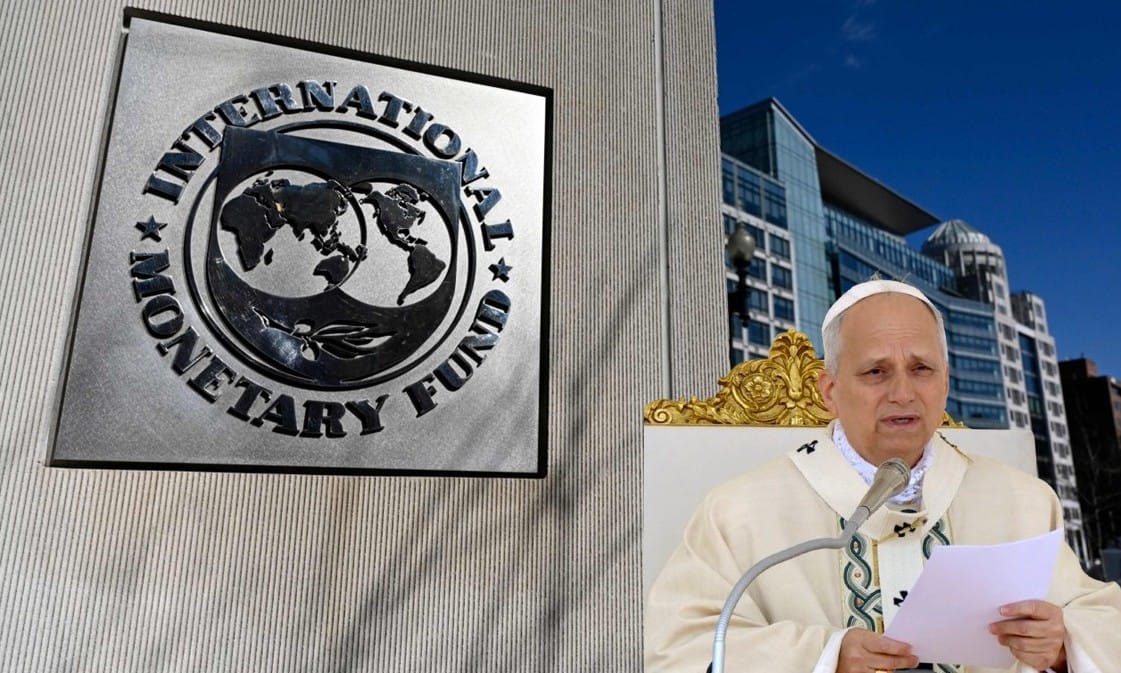European Commission Proposes Law Ending Russian Gas, Oil Imports by 2027
The European Commission has proposed legislation to stop the importation of natural gas, oil and oil products from Russia into the European Union by 2027, betting on global liquefied natural gas (LNG) and increased regional infrastructure interconnectivity.
“This will increase our energy independence while also reducing the revenues Putin uses to finance his war”, Energy and Housing Commissioner Dan Jorgensen said in a statement issued online by the Commission.
“The Commission will work hand in hand with all Member States, especially those that may face challenges because of this. No Member State will be left without energy as a result of this proposal”.
The proposal bans the import of gas in gaseous (via pipeline) and liquefied state that “originates in or is exported directly or indirectly from the Russian Federation” from January 2026, the official text stated.
For short-term supply contracts concluded before June 17, 2025, the end date would be June 17, 2026. The proposed law defines a short-term supply contract as that which does not exceed one year.
For long-term supply contracts, as well as short-term supply contracts involving delivery to an interconnection point with a landlocked country, gas imports should end 2027.
The proposal added, “The provision of long-term [more than one year] LNG terminal services in the EU to entities established in the Russian Federation or entities controlled by natural persons or legal entities established in the Russian Federation shall be prohibited as of 1 January 2026”.
For long-term LNG terminal contracts concluded before June 17, 2025, services should end 2027.
The proposal requires member states to come up with national diversification plans by March 2026.
“Where Member States receive imports of oil [including oil products] originating in or exported directly or indirectly from the Russian federation, they shall establish a diversification plan describing measures, milestones and potential barriers to diversify their oil supplies, to discontinue, by 1 January 2028, imports of oil which originates in or is [sic] exported directly or indirectly from the Russian Federation”, it added.
Only Hungary and Slovakia were the remaining EU members still buying oil from Russia according to the Commission.
The proposal now needs to be adopted by both the European Parliament and Council, the Commission said.
Russia accounted for 19 percent or 13.4 billion cubic meters (473.22 billion cubic feet) of EU gas imports in the fourth quarter (Q4) of 2024, according to the Commission’s latest quarterly gas market report. EU imports of Russian gas increased five percent quarter-on-quarter and eight percent year-over-year.
The EU imported a total of 70 Bcm in the October-December 2024 period. Pipeline gas constituted 62 percent and LNG 38 percent.
Russia was the EU’s second-biggest source of pipeline gas in Q4 2024 accounting for 19 percent, the same as North Africa. Norway remained the EU’s top pipeline gas supplier accounting for 50 percent. Azerbaijan contributed seven percent.
For LNG, Russia was also second at 19 percent. The United States stayed number one at 43 percent. Qatar came third at 13 percent.
However, the growth in LNG capacity across the globe will allow the EU to replace Russian gas, the Commission said in an analysis of impacts of the proposed law.
“LNG of non-Russian origins accounts now for not less than 30 percent of the EU imports, twice as much as the pre-crisis level”, the analysis said. “As of 2025, the LNG global supply is set to grow significantly - and at increasingly fast pace - with 33 bcm of additional capacity in 2025, more than 50 bcm in 2026, nearly 70 bcm in 2027, and 50 bcm in 2028. This will increase the total LNG capacity by about 200 bcm by 2028, five times more than the EU imports of Russian gas.
“Overall, between 2025 and2030, close to 270 bcm/y of new LNG export capacity is expected to come online from projects that have already been approved. This represents the largest capacity wave in any comparable period in the history of LNG markets.
“While some of those projects are unlikely to supply gas directly to Europe, they would free up supplies from other parts of the world that can then serve the EU markets”.
The EU has now expanded its LNG import capacity to about 250 billion cubic meters a year, more than twice its current LNG import, according to the analysis.
“The average utilization of this capacity was ‘only’ 42 percent in 2024”, the analysis said. “This suggests that the EU has plenty of spare capacity to accommodate for additional LNG import to replace Russian supplies”.
Additionally the EU has built sufficient and well-interconnected infrastructure to access not only LNG but also pipeline gas from non-Russian sources, it said.
“Nonetheless, additional infrastructure projects are currently under completion to remove remaining bottlenecks, enhance the diversification capability and further strengthen the security of supply in Central and South-East Europe”, the analysis added.
“Thanks to the abundant import capacity, and the well-connected and flexible gas infrastructure, the EU is already able to meet its gas demand as well as its storage filling targets during the injection season, even without Russian gas supply”, the Commission declared.
The analysis pointed to the situation after Russian gas flows to Europe via Ukraine ended in December. The halt “resulted in a reshuffling of the flow patterns in the Central-Eastern region of Europe but, as confirmed by Member States potentially affected in the meeting of the dedicated group that took place on 2 January 2025, no concerns for the security of gas supply to the Region arose as a result of the end of the transit”, the analysis said.
“The effects on prices were also limited. No significant and lasting price increase materialized after the halt of the flow through Ukraine. Gas prices increased from about EUR 45/MWh to EUR 50/MWh in the days across the end of 2024 and the beginning of 2025 but they very rapidly dropped, and by the end of the first week of January 2025 prices were back to the pre-Christmas level (EUR 45/MWh)”, the analysis said.
“Some commentators suggested that market operators may have already factored the increase in the prices during 2024 before the halt of the transit. Even if so, however, according to the few available estimates developed in 2024, the expected price increase was limited to 5 percent or less, which - at the current prices (approx. EUR 35/MWh) - would translate in a rise of EUR 1-2/MWh.
“The price increase observed in the second half of 2024 and through the 2024/2025 winter season was the result of a number of concomitant factors of which the anticipation of the end of Ukrainian transit played, if any, a limited role.
“These factors include the depletion of storage, the status of development of new liquefaction plants worldwide, some infrastructure outage and disruption, lower renewable generation, the increase in the demand in the EU and Asia, combined with a number of geopolitical events which contributed to create uncertainty and fear of disruption, such as for example, the US sanctions against Gazprombank, China’s import tariffs on US LNG, etc.
“As the end of the withdrawal season approached and the tension linked to some factors mentioned above eased, gas prices gradually fell and returned to the levels of summer 2024”.
The analysis also said the ban on Russian oil “would not raise security of supply concerns”. Remaining Russian supplies could be replaced through the Adria pipeline, which carries up to 11.4 million metric tons a year from the Croatian port of Omisalj, through Hungary, to the Druzhba pipeline in Sahy, Slovakia, it said.
“The Adria pipeline has sufficient capacity to cover the entire demand of Slovakia and Hungary, the only two Member States still importing crude oil from Russia (5.2 million tonnes for Slovakia and 6.2 million tonnes for Hungary) as confirmed by Slovakia’s National Energy and Climate Plans”, the analysis said.
“Moreover, refineries in Hungary and Slovakia are well in advanced in developing the necessary technical capabilities to process crude oil from origins other than Russia”.
The analysis noted Czechia successfully transitioned away from Russian oil in April 2025 without “material consequences on retail prices”.
The impact of an EU ban on Russian oil on prices “is expected to be limited”, it said.
“The market for crude oil is global and Brent - the price benchmark commonly used in the EU and used to price about two-thirds of the internationally traded oil - reflects global oil market fundamentals and the global economy… Czechia has stopped importing Russian crude oil since April 2025 (approx. 4.3 mt per year), replacing it with seaborne oil coming from the Mediterranean ports, and there is no indication that this has had any appreciable impact on the international prices”, the analysis explained.
“On the contrary, Brent is on a downward trend since January 2025, returning to levels last seen in spring 2021.
“The Czech experience (see Box 3 above) also shows that phasing out Russian oil, if anticipated and well-prepared, does not cause materially negative effects on local retail prices”.
To contact the author, email [email protected]








